“What didn’t kill me made me love life a lot more”
Bianca Balti is a renowned Italian supermodel known for her decade-long collaboration with Dolce & Gabbana and work with top fashion houses like Valentino and Armani. Beyond her fashion success, she has become a powerful advocate for cancer awareness after revealing her BRCA1-related stage III C ovarian cancer diagnosis in 2024, following a preventive double mastectomy in 2022.

Photo: Bianca Balti Instagram account
How Was Bianca Balti Diagnosed with Cancer?
Bianca Balti’s diagnosis journey began with severe lower abdominal pain, prompting an emergency room visit in September 2024. These symptoms are common early indicators of ovarian cancer but are frequently overlooked, as they resemble less serious gastrointestinal or urinary conditions. Typical symptoms of ovarian cancer include bloating, abdominal discomfort, early satiety (feeling full quickly), and frequent urination. Her ER visit triggered urgent investigations that revealed advanced disease requiring immediate intervention.
What Does a Diagnosis of Stage 3C Ovarian Cancer Mean Clinically?
Stage III C ovarian cancer signifies that cancer is present in one or both ovaries or fallopian tubes and has spread beyond the pelvis into the abdominal cavity. Specifically, this stage involves tumor deposits larger than 2 centimeters on the peritoneum (abdominal lining) and may also affect lymph nodes or the surface of abdominal organs such as the liver or spleen.
Clinically, stage III C reflects advanced but still potentially treatable disease. Standard treatment includes aggressive cytoreductive surgery to remove visible tumor burden, followed by systemic chemotherapy. Though prognosis worsens with higher stages, many patients experience meaningful responses, especially with prompt and comprehensive treatment.

Photo: Bianca Balti Instagram account
How Quickly Did the Diagnosis Progress from Symptom Onset?
The symptoms Bianca experienced likely began weeks before her emergency room visit, as ovarian cancer symptoms are typically subtle and nonspecific in early stages. After she presented with acute pain in September 2024, the medical team would have conducted diagnostic imaging, measured CA-125 tumor marker levels, and possibly proceeded with biopsy or surgical exploration to confirm the diagnosis and stage.
Her diagnosis of stage III C ovarian cancer was established shortly after these investigations, leading to surgery and the initiation of chemotherapy by October 2024. This fast progression reflects the aggressive nature of advanced ovarian cancer and the urgency required in its management.
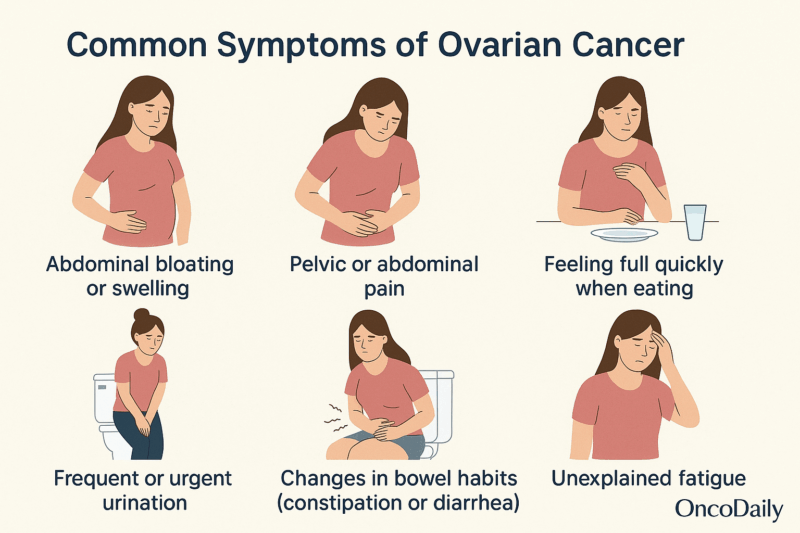
What Was the Role of Genetic Testing and the BRCA1 Mutation in Bianca Balti’s Case?
Before her ovarian cancer diagnosis, Bianca had undergone genetic testing that revealed a BRCA1 gene mutation—a significant hereditary risk factor for breast and ovarian cancers. This testing was performed following her preventive double mastectomy in December 2022, a proactive step to lower her breast cancer risk.
BRCA1 mutations compromise DNA repair mechanisms, leading to heightened cancer susceptibility. Women with a BRCA1 mutation face a 40–60% lifetime risk of developing ovarian cancer, compared to about 1–2% in the general population. This genetic knowledge helped Bianca make preventive choices and influenced her treatment strategy, including potential eligibility for PARP inhibitors—a class of targeted therapy designed to exploit DNA repair deficiencies in cancer cells.
What Was Bianca Balti’s Initial Reaction to Her Diagnosis?
Bianca Balti openly shared the emotional rollercoaster she experienced upon learning about her stage 3C ovarian cancer diagnosis. In a heartfelt Instagram post shortly after her emergency room visit in September 2024, she wrote,
“It’s been a week full of fear, pain and tears but mostly love, hope, laughter and strength”.
This candid admission highlights the intense vulnerability she felt initially-fear and uncertainty about her health and future-but also her remarkable resilience and optimism.
Despite the shock and distress, Balti balanced her vulnerability with public strength. She used social media not only to update her followers but to convey a message of hope and determination. She expressed confidence in her ability to overcome the disease, stating,
“I have a long road ahead, but I am confident I will overcome this. For myself, for my loved ones-my daughters are my top priority-and for all of you who require strength, feel free to draw from mine, as I have plenty to share”.
Her openness about the emotional challenges, including moments of tears and pain, made her story relatable and inspiring.
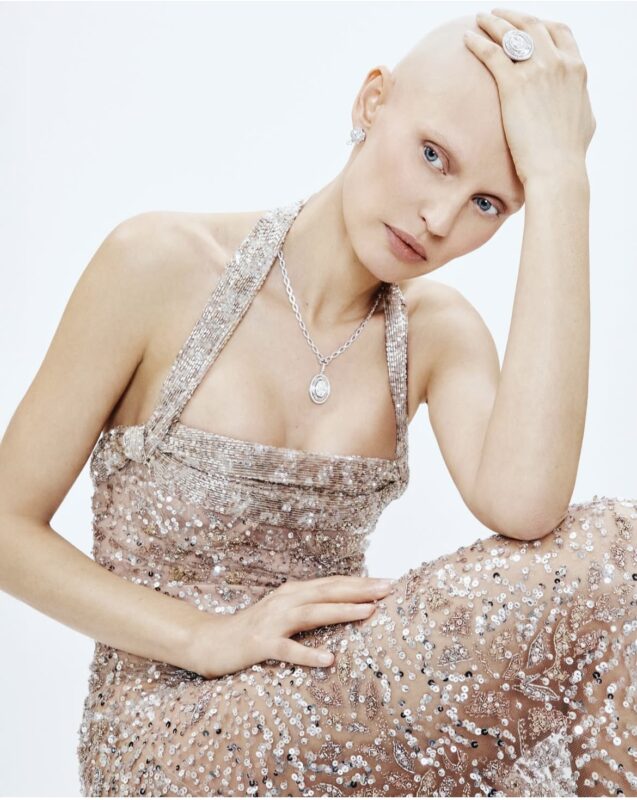
Photo: Bianca Balti Instagram account
Throughout her posts and interviews, Balti emphasized love, laughter, and the support of family and friends as vital sources of strength. She shared joyful moments during her hospital stay, including selfies with healthcare workers and visits from loved ones, underscoring her positive outlook even amid treatment. She reassured her followers, saying,
“I am doing incredibly well, I promise you. I have immense hopes for the future. Please do not worry about me; you will see me soon in excellent health”.
Balti also reflected on the broader meaning of her diagnosis, encouraging others to find beauty and meaning in life’s challenges. “Life unfolds as it does; find a reason within it,” she wrote. “So far, cancer has provided me the opportunity to discover beauty amid life’s hurdles”. This perspective reveals her determination to transform adversity into empowerment.
Her public vulnerability has had a tangible impact. Balti noted that after sharing her journey, many women reached out to say they had scheduled mammograms or genetic testing, highlighting how her transparency fosters awareness and proactive health measures. She acknowledged that fear was the most difficult part of her journey-the anxiety of diagnosis, uncertainty about treatment, and concerns about body image-but affirmed that maintaining a positive relationship with her body was a significant personal victory.
In summary, Bianca Balti’s reaction to her ovarian cancer diagnosis was a complex blend of fear and pain tempered by hope, love, and resilience. By sharing her experience openly, she has not only navigated her own emotional journey with strength but also inspired and empowered others facing similar battles.
What Treatments Did Bianca Balti Undergo?
Bianca Balti discovered in 2022 that she carries the BRCA1 gene mutation, which significantly increases the risk of developing breast and ovarian cancers.
Surgery
To reduce her breast cancer risk, she chose to undergo a preventive double mastectomy in December 2022. This proactive surgery involved the removal of both breasts before any cancer was detected, reflecting a growing trend among high-risk individuals to take preventive measures based on genetic testing results. Balti described this decision as empowering, motivated by her desire to be a good role model for her daughters and to take control of her health.
In September 2024, after experiencing severe abdominal pain, Bianca checked herself into the emergency room. Diagnostic tests revealed she had stage 3C ovarian cancer, an advanced form of the disease where cancer has spread beyond the pelvis. She underwent emergency surgery shortly after diagnosis to remove as much of the tumor as possible, a critical step in managing advanced ovarian cancer. This surgery was followed by chemotherapy to target residual cancer cells.
Chemotherapy
Bianca began her chemotherapy treatment on October 14, 2024, at Providence St. Joseph Hospital in Los Angeles. She underwent multiple cycles of chemotherapy over the next few months, completing treatment on January 27, 2025. Throughout this period, she shared candid updates on social media, including photos from hospital visits and moments of vulnerability, such as shaving her head during treatment. Despite the challenges, she reported feeling “as alive as ever” during chemotherapy, embracing gratitude and positivity.
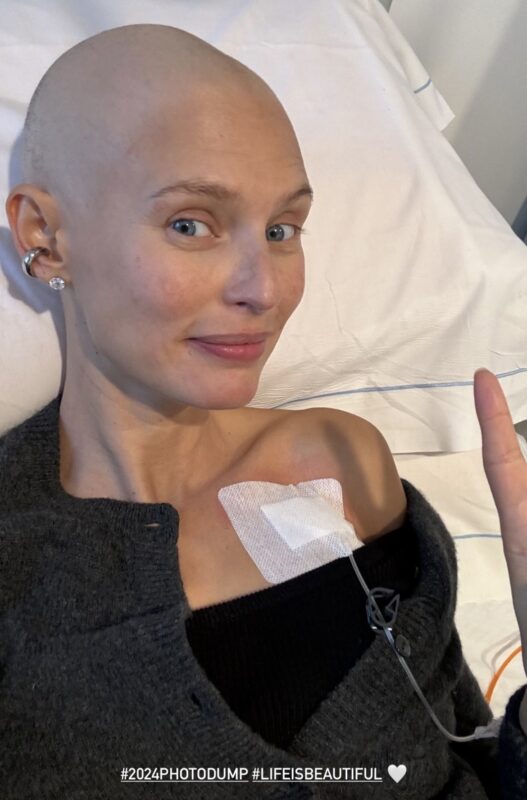
Photo: Bianca Balti Instagram account
Given her BRCA1 mutation and stage 3C ovarian cancer diagnosis, Bianca is eligible for treatment with PARP inhibitors-a class of targeted therapies that exploit the defective DNA repair pathways in BRCA-mutated cancer cells. While it is not publicly confirmed whether she has received PARP inhibitors, current guidelines from the American Society of Clinical Oncology recommend offering these drugs to women with advanced ovarian cancer who respond to chemotherapy, regardless of genetic mutation status. PARP inhibitors have improved progression-free survival and are considered a revolutionary addition to ovarian cancer treatment.
Following the completion of chemotherapy in late January 2025, Bianca began the recovery phase. She documented her hair regrowth journey, sharing videos and photos that showed her transitioning from a shaved head back to a short hairstyle. This visible sign of recovery resonated with many of her followers, symbolizing hope and renewal after a difficult treatment period. She emphasized gratitude for life and the support she received throughout her cancer journey.
How Has Bianca Balti Shared Her Journey Publicly?
Bianca Balti has openly shared her cancer journey primarily through Instagram, using the platform to document her experience with honesty and vulnerability. After her diagnosis in September 2024, she posted emotional updates from hospital visits, including photos and videos showing her chemotherapy treatments, moments of pain, and the support she received from loved ones and medical staff. She also shared intimate moments like shaving her head during chemotherapy, symbolizing her fight against cancer and embracing the changes in her appearance.
Her public appearances during and after treatment have further highlighted her resilience. Notably, Balti appeared at the Sanremo Music Festival in 2025, confidently stepping onto the stage without a wig and proudly displaying her scars, sending a powerful message of authenticity and self-acceptance. Through these actions, she encourages others facing similar battles to embrace their bodies and find strength in vulnerability.
Balti’s message consistently emphasizes hope, love, and the beauty found even amid hardship. She uses her platform not only to update followers on her health but to advocate for cancer awareness, genetic testing, and preventive care, inspiring many to take proactive steps for their health.
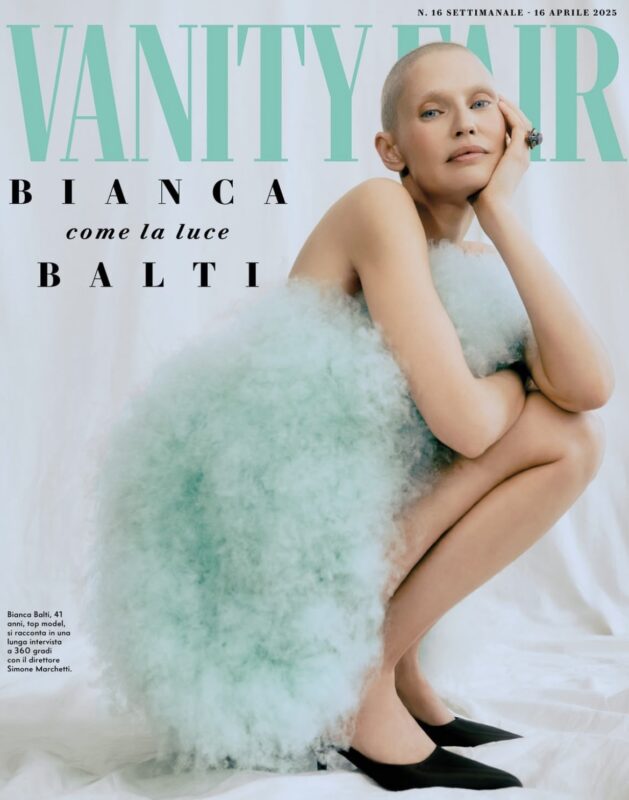
Photo: Bianca Balti Instagram account
How Bianca Balti Uses Her Platform to Raise Awareness About Ovarian Cancer
Bianca Balti has actively used her platform to raise awareness about BRCA1 gene mutations and the importance of genetic testing. After revealing her own BRCA1 status and preventive double mastectomy, she has encouraged women to undergo mammograms and preventive screenings, emphasizing early detection’s life-saving potential. She speaks openly about preventive surgeries and cancer risk management, breaking taboos around these difficult decisions.
While there is no public information about formal collaborations with cancer organizations, her high-profile appearances-such as co-hosting the Sanremo Music Festival 2025 shortly after completing chemotherapy-have amplified her advocacy. At Sanremo, she made a powerful statement by embracing her post-surgery scars and baldness, inspiring many to see beauty beyond illness and to confront cancer with strength and authenticity.
Balti’s openness has had a tangible impact: many followers have reported scheduling mammograms and genetic tests after learning about her journey. She has become a relatable and empowering figure in cancer awareness campaigns, using her voice to destigmatize cancer and promote proactive health measures.
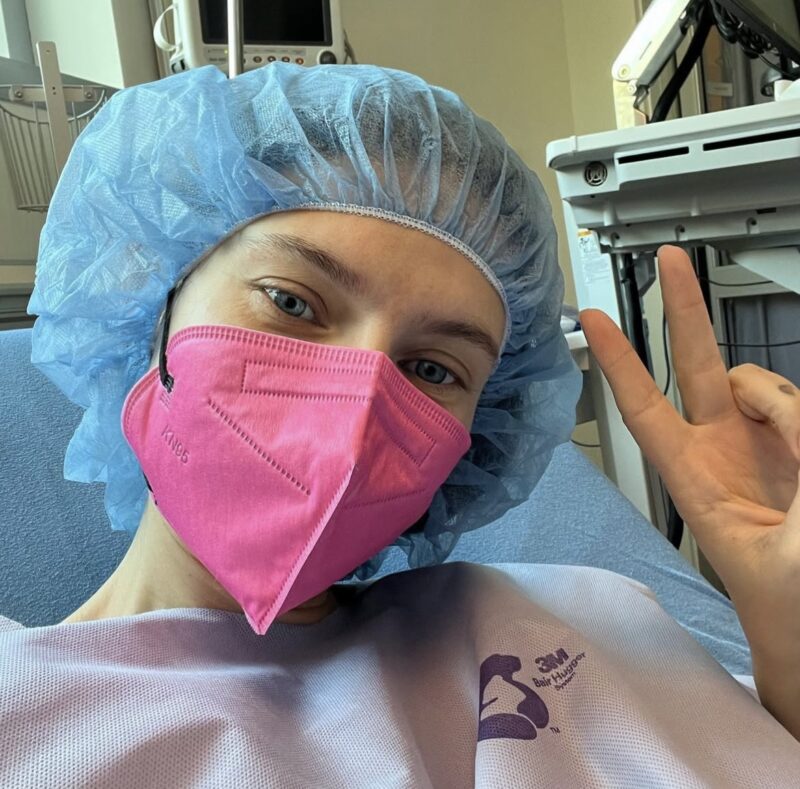
Photo: Bianca Balti Instagram account
How Has Bianca Balti Balanced Motherhood, Career, and Cancer?
Bianca Balti has shown extraordinary resilience in balancing motherhood, her modeling career, and her cancer battle. As a mother of two daughters, Matilde and Mia, she draws immense strength and motivation from her role as a parent. She has openly stated that her children are her top priority and a key reason for her determination to fight cancer and stay strong through treatment.
Despite undergoing surgery and chemotherapy for stage III C ovarian cancer, Balti has continued to engage with her modeling career and public life. She maintained collaborations with major brands such as Montblanc and Dolce & Gabbana even during her treatment period. Notably, shortly after completing chemotherapy in January 2025, she appeared confidently at the Sanremo Music Festival 2025, embracing her post-treatment appearance without a wig and proudly showing her scars. This public presence underscores her commitment to her career and her role as a cancer advocate.
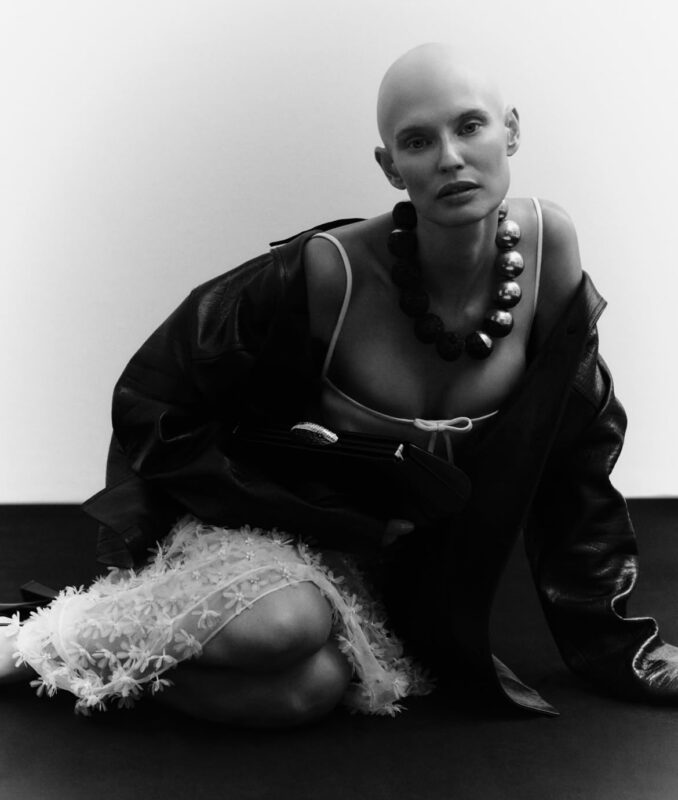
Photo: Bianca Balti Instagram account
Balti has spoken candidly about body image and self-acceptance during her illness. She acknowledges that while many women struggle with changes in appearance due to cancer treatment, she has worked to maintain a positive relationship with her body. She views her scars and hair loss as symbols of strength and empowerment rather than loss. By sharing her journey openly on social media, including moments of vulnerability like shaving her head and hair regrowth, she encourages others to embrace their bodies and find confidence amid illness. Her authenticity has inspired many followers to pursue genetic testing and preventive health measures.
Is Bianca Balti Cancer-Free?
As of April 2025, Bianca Balti has completed her chemotherapy treatment for stage 3C ovarian cancer, which ended on January 27, 2025. While she has publicly shared her ongoing recovery and appeared at high-profile events like the Sanremo Music Festival 2025, confidently showing her post-treatment appearance without a wig and embracing her scars, there has been no official announcement declaring her cancer-free status.
Balti remains optimistic and resilient, describing herself as feeling “more alive than ever” after treatment and continuing to advocate for cancer awareness. However, given the advanced stage of her diagnosis and the nature of ovarian cancer, medical follow-up and monitoring are ongoing. Therefore, as of now, she is in recovery and remission phases but not formally declared cancer-free in public sources.
You Can Also Read Remembering Virgil Abloh: Louis Vuitton’s Creative Director Honored at 41 After His Brave Battle with Cardiac Angiosarcoma by Oncodaily
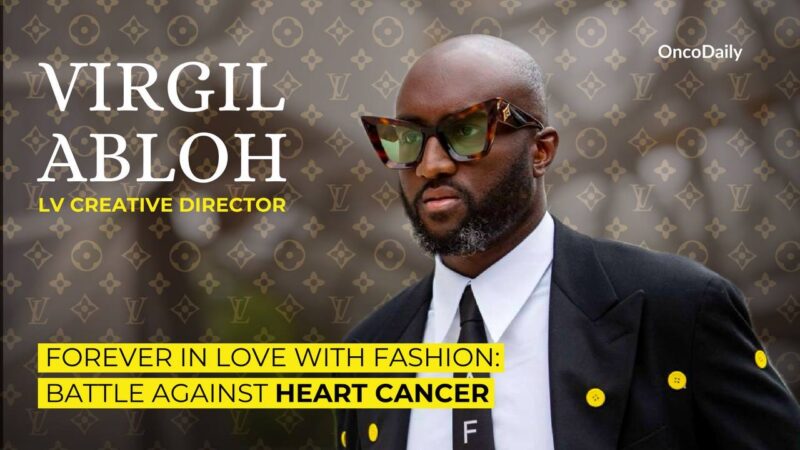
What Causes Ovarian Cancer?
Ovarian cancer is caused by genetic, hormonal, and environmental factors that lead to abnormal cell growth in the ovaries. While the exact cause is often unknown, several well-established risk factors contribute to its development:
What Genetic Factors Increase the Risk of Ovarian Cancer?
Inherited germline mutations are a major contributor to the development of epithelial ovarian cancer, especially the high-grade serous subtype. Among these, BRCA1 and BRCA2 mutations are the most impactful. According to a 2022 update from GeneReviews (Petrucelli et al.), BRCA1 mutation carriers have a 44% lifetime risk, and BRCA2 mutation carriers have a 17% risk of developing ovarian cancer. These mutations impair homologous recombination repair, facilitating genomic instability and tumor development.
Additional genes such as RAD51C, RAD51D, and BRIP1 have also been associated with moderate increases in risk. Their clinical importance has grown, and they are now included in multigene testing panels for hereditary cancer syndromes (Larsen et al., J Clin Oncol, 2023). Identifying these mutations is essential not only for risk-reducing interventions (e.g., salpingo-oophorectomy) but also for guiding treatment with PARP inhibitors, which target DNA repair-deficient tumors.
What Role Do Environmental and Lifestyle Factors Play in Ovarian Cancer?
Environmental exposures and lifestyle behaviors also influence ovarian cancer risk. One key factor is menopausal hormone therapy (MHT). A 2022 pooled analysis by the International Collaboration on Ovarian Cancer Etiology (Lancet Oncol) found that long-term use of estrogen-only therapy increases the risk of serous and endometrioid ovarian cancers.
Obesity is another established modifiable risk factor. A 2021 meta-analysis (Zhou et al., Cancer Med) found a positive correlation between higher BMI and ovarian cancer risk, especially in postmenopausal women. Proposed mechanisms include chronic low-grade inflammation and increased estrogen production in adipose tissue.
Regarding talcum powder use, a large prospective cohort study (O’Brien et al., JAMA, 2020) found no statistically significant association between genital talc use and ovarian cancer, though some earlier studies had raised concerns, and the topic remains under investigation. Endometriosis also presents a recognized risk, particularly for clear cell and endometrioid ovarian carcinomas. A 2023 review (Taniguchi et al., Cancers) emphasized that chronic inflammation and oxidative stress in the endometriotic environment likely contribute to malignant transformation.
You Can Also Read Ovarian Cancer: Symptoms, Causes, Stages, Diagnosis and Treatment by Oncodaily
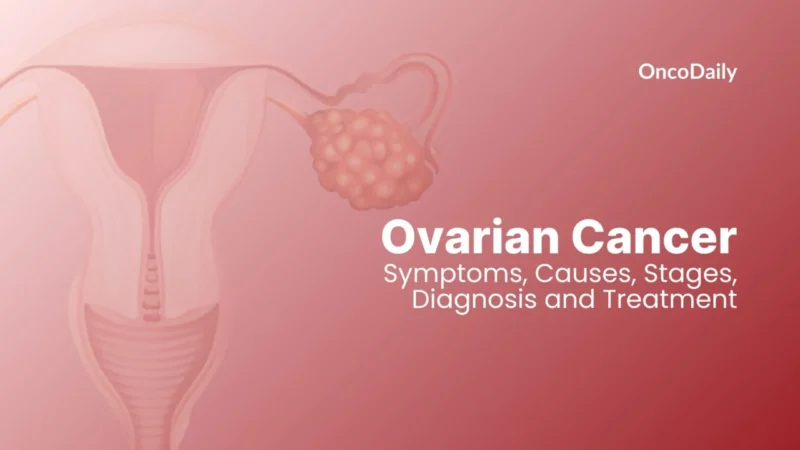
How Can Ovarian Cancer Be Prevented?
Prevention of ovarian cancer involves a combination of genetic risk assessment, reproductive factors, and surgical interventions supported by current clinical evidence. Women who carry inherited mutations in the BRCA1 or BRCA2 genes or other high-risk genetic profiles are advised to undergo genetic counseling and consider risk-reducing bilateral salpingo-oophorectomy, which can reduce ovarian cancer risk by approximately 90% in mutation carriers. This surgery, involving removal of the fallopian tubes and ovaries, is typically recommended after childbearing is complete and significantly lowers the incidence of ovarian, fallopian tube, and primary peritoneal cancers (Kotsopoulos et al., 2023; NCCN, 2024).
How Do Reproductive and Hormonal Factors Influence Ovarian Cancer Risk?
For women at average risk, epidemiological studies indicate that factors reducing the number of lifetime ovulations confer protective effects. Multiparity, defined as having two or more full-term pregnancies, is associated with a 30% to 60% reduction in ovarian cancer risk, with incremental benefit observed with each additional birth (Modugno et al., 2022). Breastfeeding further decreases risk, with data suggesting approximately a 2% risk reduction per month of breastfeeding (Jordan et al., 2021).
The use of combined oral contraceptives has been shown to reduce ovarian cancer risk by up to 50% with five or more years of use, and this protective effect can persist for decades after discontinuation. Notably, progesterone-only contraceptives have not demonstrated a comparable protective effect (Moorman et al., 2023; ESMO, 2024).
Surgical sterilization procedures such as tubal ligation and opportunistic salpingectomy during pelvic surgeries have also been linked to significant risk reductions, ranging from approximately 29% to over 50%, depending on the ovarian cancer subtype. Salpingectomy is increasingly favored as it preserves ovarian hormonal function while effectively lowering cancer risk (Falconer et al., 2022; Wright et al., 2023).
What Role Do Lifestyle Factors and Screening Play in Prevention?
Other modifiable factors include maintaining a healthy body weight, as obesity is associated with increased ovarian cancer risk, although lifestyle interventions have a more modest impact compared to genetic and reproductive factors (Liu et al., 2023). Use of hormone replacement therapy (HRT) after menopause may modestly increase risk and should be individualized based on patient health status (Smith et al., 2024).
Currently, no effective population-wide screening test exists for ovarian cancer, emphasizing the importance of risk assessment and preventive strategies in high-risk populations. Clinical guidelines from major oncology organizations recommend individualized prevention plans incorporating genetic testing, counseling, and consideration of prophylactic surgery where appropriate (NCCN, 2024; Medscape, 2024).
You Can Also Watch Tiffany Sia on Germline Mutations in Ovarian Cancer | ASCO 2024 by Oncodaily
Written by Aharon Tsaturyan MD
FAQ
What type and stage of cancer does Bianca Balti have?
Bianca Balti was diagnosed with stage 3C ovarian cancer, indicating that the cancer had spread beyond the ovaries to other organs in the pelvic area and possibly lymph nodes.
How did Bianca Balti discover her cancer diagnosis?
She went to the emergency room after experiencing lower abdominal pain, where tests revealed the ovarian cancer diagnosis.
Does Bianca Balti have a genetic predisposition to cancer?
Yes, she carries the BRCA1 gene mutation, which significantly increases the risk of breast and ovarian cancer. She had a preventive double mastectomy after learning about her genetic risk.
What treatments has Bianca Balti undergone for her cancer?
Balti has had surgery to remove cancerous tissue from her lower abdomen and is undergoing chemotherapy as part of her treatment plan.
How has Bianca Balti managed her career and family during her cancer battle?
She draws strength and motivation from her two daughters and has openly shared how she balances motherhood, her modeling career, and cancer treatment with hope and resilience.
What has Bianca Balti said about body image and self-acceptance during her illness?
She has spoken honestly about the fear and challenges but emphasizes maintaining a positive relationship with her body, viewing scars and hair loss as symbols of strength and empowerment.
How has Bianca Balti’s openness about her cancer affected others?
Her candidness has inspired many women to get genetic testing and screenings, raising awareness about early detection and cancer prevention.
Has Bianca Balti faced any controversies or scandals in her personal life?
While Bianca Balti has kept a relatively private personal life, her high-profile marriages and divorces, including her split from Italian photographer Christian Lucidi and later marriage to Matthew McRae, have drawn media attention. However, no major scandals have been publicly reported.
What is known about Bianca Balti’s relationships and marriages?
Bianca was married to Christian Lucidi from 2006 until their divorce in 2010. She later married American Matthew McRae in 2016 after having two daughters with him. Their relationship and wedding were covered widely but remained largely positive and private.
